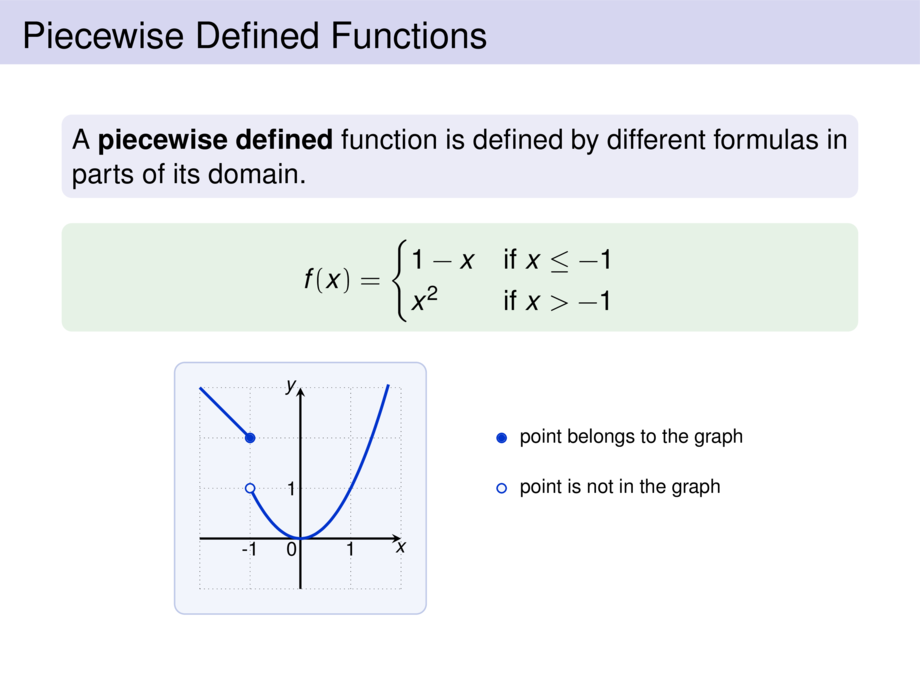



































































































60/101
\begin{frame}
\frametitle{Piecewise Defined Functions}
\begin{block}{}
A \emph{piecewise defined} function is defined by different
formulas in parts of its domain.
\end{block}
\pause
\begin{exampleblock}{}
\begin{malign}
f(x) =
\begin{cases}
1-x &\text{if $x \le -1$}\\
x^2 &\text{if $x > -1$}
\end{cases}
\end{malign}
\end{exampleblock}
\begin{center}
\scalebox{.7}{
\begin{tikzpicture}[default]
\diagram{-2}{2}{-1}{3}{1}
\diagramannotatez
\diagramannotatex{-1,1}
\diagramannotatey{1}
\draw[cblue,ultra thick] plot[smooth,domain=-2:-1,samples=20] (\x,{1-\x});
\draw[cblue,ultra thick] plot[smooth,domain=-1:1.75,samples=20] (\x,{pow(\x,2)});
\node[include=cblue] at (-1,2) {};
\node[exclude=cblue] at (-1,1) {};
\pause
\node[include=cblue] at (4,2) {};
\node[anchor=west] at (4.3,2) {point belongs to the graph};
\node[exclude=cblue] at (4,1) {};
\node[anchor=west] at (4.3,1) {point is not in the graph};
\end{tikzpicture}
}
\end{center}
\end{frame}

